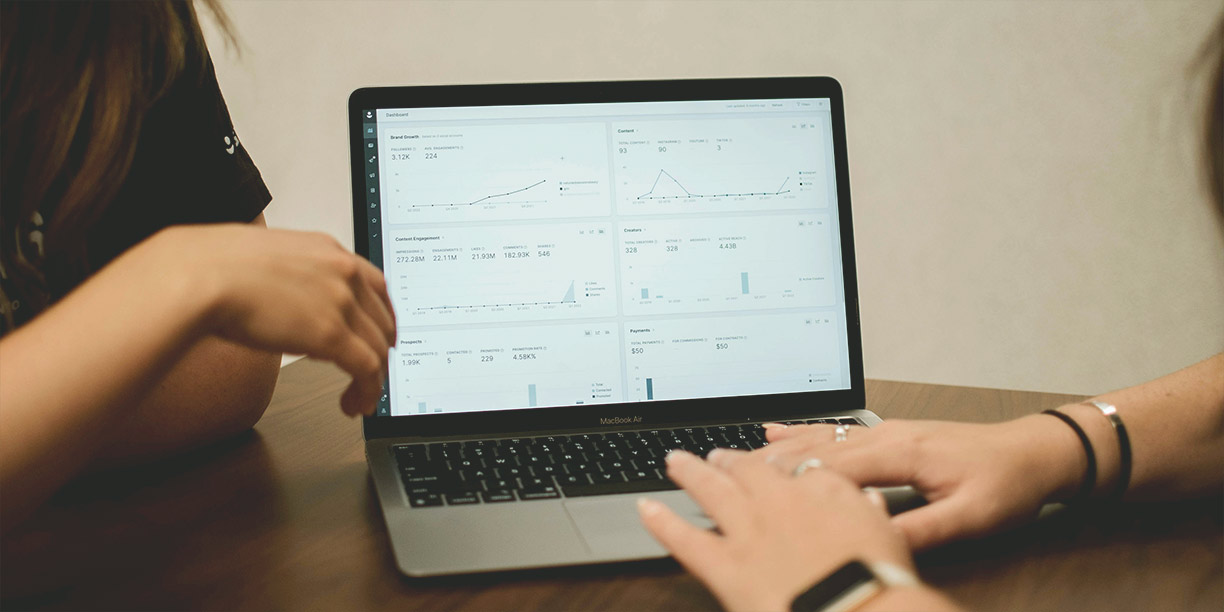A Single Source of Truth: How Your CRM and Data Warehouse Work Together

This blog was written in collaboration with Spence Perry, Senior Data Scientist at Classy.
Our Data Science and Analytics team launched this blog series with a post describing how to combat siloed, ungoverned, and inconsistently transformed data with a modern data stack. We also addressed the possibilities organizations can unlock by streamlining data pipelines with a buy vs. build approach.
This post will explore how organizations must unite disparate business objects through careful processing, transformation, and dissemination to harness the full power of data. By integrating a customer relationship manager (CRM) and a data warehouse, organizations can gain insights into past events, execute data-informed plans today, and make educated predictions for the future.
One Source to Rule Them All
Zooming out to look at the broader picture, data plays a crucial role across various aspects, including decision-making, strategy formulation, operations, and customer engagement. Across all organizations, we typically see two fundamental data needs:
- Analytical: Stakeholders and analysts require reports that offer retrospective insights into the organization’s performance. For example, executives or board members may seek data on funds raised, volunteer engagement, or the number of individuals served.
- Operational: Organizations seek to leverage real-time data about a business object’s current status to make immediate decisions. For example, an events team might use this data to email individuals who have not yet registered for a volunteer opportunity, notifying them that there are only two days remaining to sign up.
In an ideal world, these two types of data would always be perfectly in sync. The 1,000 new supporters your communications team messaged in the tri-state area would be the same 1,000 supporters your analysts surfaced in your trusty daily dashboard.
Yet, there’s a chasm’s worth of room for discrepancy, for reasons we’ll delve into later.
The result: Several sources of truth and opportunities for error exist. However, there’s hope for data teams willing to make strategic compromises.
Bridging the Gap: Integrating CRM and Data Warehousing for Optimal Results
As an organization scales and matures, it accumulates more data, including data from sources the organization cannot anticipate today. Inevitably, there will be a natural urge to centralize and streamline this information.
A CRM might seem like a logical place to store all of donor data. CRMs have become a well-established staple of fundraising, feeling like home for teammates who interact with your constituents the most. But as the needs and complexities of an organization grow over time, a data warehouse—with its connectivity, composability, and raw computational power—might be the missing puzzle piece your organization needs to level up its data maturity.
In isolation, a CRM and data warehouse can both be useful. But together—by combining the accessibility of a CRM and the muscle of a data warehouse—the two are unstoppable.
CRM
A CRM typically holds all the information for your donors, supporters, volunteers, and partners.
For example, CRMs provide the current state of constituents connected through different relationship-based identities or hierarchies. In practical terms, these relationships are useful when you want to find out the marital status of two supporters or if a longtime donor works at a private foundation.
An organization can also use a CRM to build segments and lists for campaigns with electronic and physical mailers or turf-cutting for door-knocking campaigns. A fundraiser might also include notes on a prospective donor based on recent interactions or an event they attended.
CRMs also typically offer lightweight reporting capabilities, a rich suite of third-party integrations, and/or easily accessible APIs/webhooks to interact with data. Regarding the operations-analytics spectrum we discussed earlier, a CRM is a hybrid.
CRM Limitations: Managing Data Beyond the System’s Reach
Despite this functionality, a CRM cannot fulfill all of an organization’s data needs. Not every data source an organization wants can (or should) be imported into a CRM.
For example, consider data about grant proposals, promotional gear, or financial investments. Even if the information gets imported into a CRM, there are plenty of opportunities for error. Every time new data gets manually entered, there’s a potential for dirty data. Any time an organization moves or enters data, regardless of whether the process is automated or manual, there’s still the potential for fresh data to become stale.
What does this look like in practical terms?
Imagine trying to send a targeted email to lapsed donors with messaging alluding to a lack of giving. But it looks like some recent donors also got the message. The cost of sending a single email might be less than a penny. But the cost of alienating the wrong donor might be thousands of dollars.
While none of these problems are unique to CRMs, a more robust approach may offer a data team more strategies for monitoring and managing disparate sources.
Data Warehouse
The second data repository an organization may use within its data infrastructure is a data warehouse. A data warehouse is the landing zone for your most important data sources, including the data from your CRM.
Through a process known as ETL/ELT (extract, load, and transform), data from your online fundraising software, CRM, and other sources gets loaded into a data warehouse (often in batches). A data team then refines, enriches, and transforms it.
Centralizing raw data frees a data team from source data constraints, creating endless possibilities. After transforming the data, organizations can easily share insights from the data warehouse across various platforms, including business intelligence tools like HubSpot.
Tools to Navigate Data Complexity
Access to all that power might even feel a little dangerous at times. In The Data Warehouse Toolkit, Ralph Kimball and Margy Ross liken a data warehouse to a restaurant. Kimball and Ross list efficiency, consistency, and integrity as top priorities for this proverbial eatery.
For example, at any restaurant, there’s usually a clear line separating the dining room and the kitchen. The patrons (or business stakeholders) sit in the dining room while the professionals are hard at work in the kitchen. Chefs in the kitchen pick the finest, freshest ingredients (or, in our case, raw data) and use sharp knives and hot surfaces (or, in our case, powerful SQL queries) that could prove to be dangerous in the hands of a patron.
Through this separation, the professionals and their customers enjoy a level of quality that matches (or even exceeds) their expectations.
In the realm of a modern data stack, a plethora of tools stand ready to bolster data operations as teams navigate the complexities of data management:
- Orchestration tools facilitate the automated transfer of data to a central repository.
- Version-control transformation tools enable data teams to manipulate data consistently.
- Monitoring tools scrutinize data for irregularities continuously.
With a few clicks, these tools support and automate processes, ensuring satisfaction among team members and allowing data professionals to rest easy.
Combining the Best of Both Worlds
Earlier, we mentioned that CRM data is a potential source that we can ingest into our data warehouse. While a one-way flow of information is useful for getting customer data into a data warehouse, wouldn’t it be great to leverage those transformed data from our data warehouse inside a CRM?
Reverse ETL takes finely curated and transformed data and transports it back into a source system. Not only can this data land in a CRM, but you could also transport transformed data to an ad platform or leverage it inside an e-commerce tool for an organization’s branded e-store.
Insights Unlocked through a Fully Unified Warehouse
With a fully integrated data platform, you can cook up insights that go beyond a single business object or family of business objects and tie your organization’s work together. Here are some examples of reporting, monitoring, and targeting capabilities that stakeholders might unlock with the right setup:
Business Intelligence

Operational Intelligence

Unified Insights
A data warehouse divided cannot stand, and a data-fueled organization needs to be able to leverage all available analysis angles.
Bringing those different business objects together requires careful processing, transformation, and dissemination to be useful to your organization’s business stakeholders. Only through the combined power of a CRM and a data warehouse can an organization be in a strong position to understand what happened yesterday, execute a data-informed operational plan flawlessly today, and perhaps even make educated guesses about what will happen tomorrow.
Copy Editor: Ayanna Julien

The Essential Role of a Modern Data Stack in Next-Gen Giving
Subscribe to the Classy Blog
Get the latest fundraising tips, trends, and ideas in your inbox.
Thank you for subscribing
You signed up for emails from Classy
Request a demo
Learn how top nonprofits use Classy to power their fundraising.



